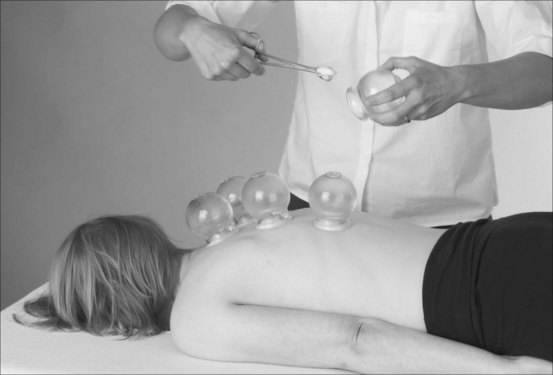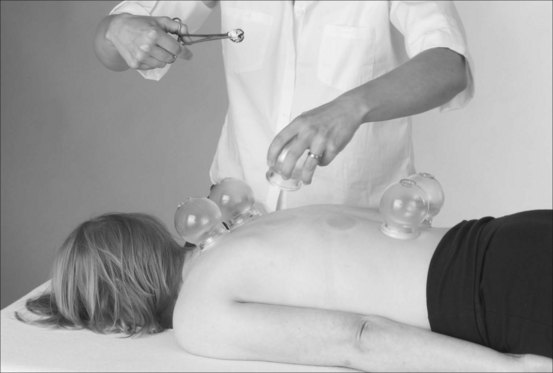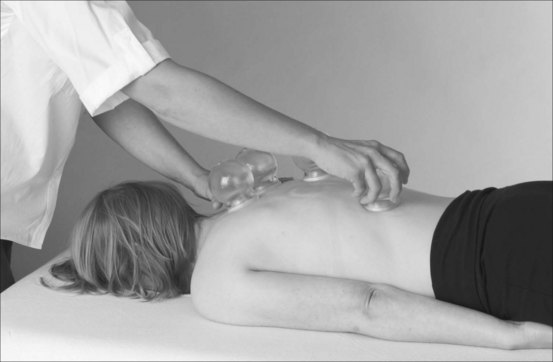CHAPTER 8 Ancillary therapies
Cupping
How to apply cupping
To create the suction, which enables the cups to stick to the skin, you have to remove the oxygen from the cup by briefly putting a flame into it (Fig. 8.1).
1. Lubricate the patient’s skin at the area you want to cup with a little base oil such as grapeseed oil.
2. Bring the cups that you want to use close to the patient.
3. Soak a small ball of cotton wool in surgical spirits and squeeze out any excess.
4. Hold the soaked ball of cotton wool with a pair of long-handled forceps in your dominant hand and light it.
5. Warm the rim of the glass cup with the flame so that it is not cold when you put it onto your patient’s skin. Test the temperature of the cup rim on the back of your hand.
6. Holding the cup close to the area you want to apply it to, put the flame into the cup very briefly, then withdraw the flame and immediately apply the cup to the skin. If you hold the cup too far away from the skin, by the time you apply it, oxygen will have returned to the cup and there will be very little or no suction.
7. Keep the flame away from the patient. When you have finished cupping, either blow out the flame or put it in water to extinguish it.
8. To remove the cups, press the skin by the edge of the cup firmly with the fingers of one hand to allow air in and gently lift the cup off with the other hand. If your cupping is too strong you can loosen the suction by using this pressing method to allow a little air into the cup.
9. Remove any oil with a clean piece of couch roll.
Cupping marks
There are several cupping methods and the ones that are relevant to Tui na are described below.
Empty or walking cupping
This is a very useful method if you have a patient who is both Deficient and has a lot of Qi stagnation. It invigorates the Qi but does not drain it. It is commonly applied to the back along the Bladder channel and Governing Vessel. Several cups, usually between five and 10, are applied one after another in quick succession. Each cup only remains in place for a few seconds before it is removed and replaced at a different site. The cups are kept continually moving on and off the body for about 5 minutes (Fig. 8.2).
Moving or sliding cupping
This is a strong method of cupping and can be painful if the suction applied is too strong. It is generally used for Excess Heat conditions and can create some quite dramatic looking purple red marks. The cups are applied and then slid up and down the area to be treated. It is usually applied to the back (Fig. 8.3).
Gua sha
The ‘sha’ or rash
The color of the sha is a useful diagnostic tool:
• Very light sha indicates Blood Deficiency
• Red sha indicates a recent invasion of a pathogenic factor
• Dark red sha usually indicates Heat
• Purple or very dark sha indicates long-standing Blood stasis
Stay updated, free articles. Join our Telegram channel

Full access? Get Clinical Tree








